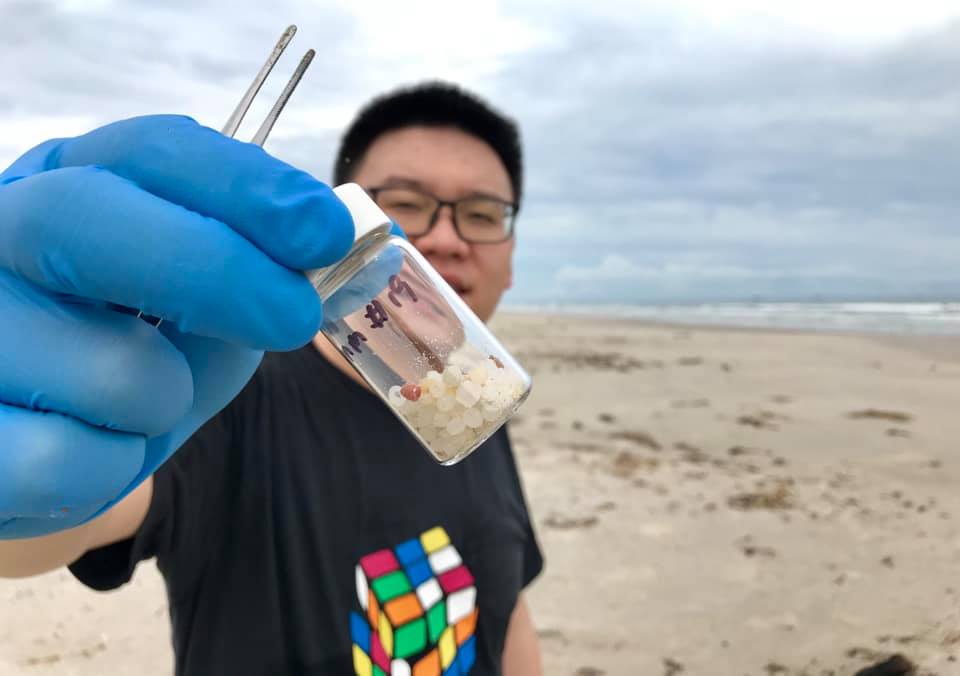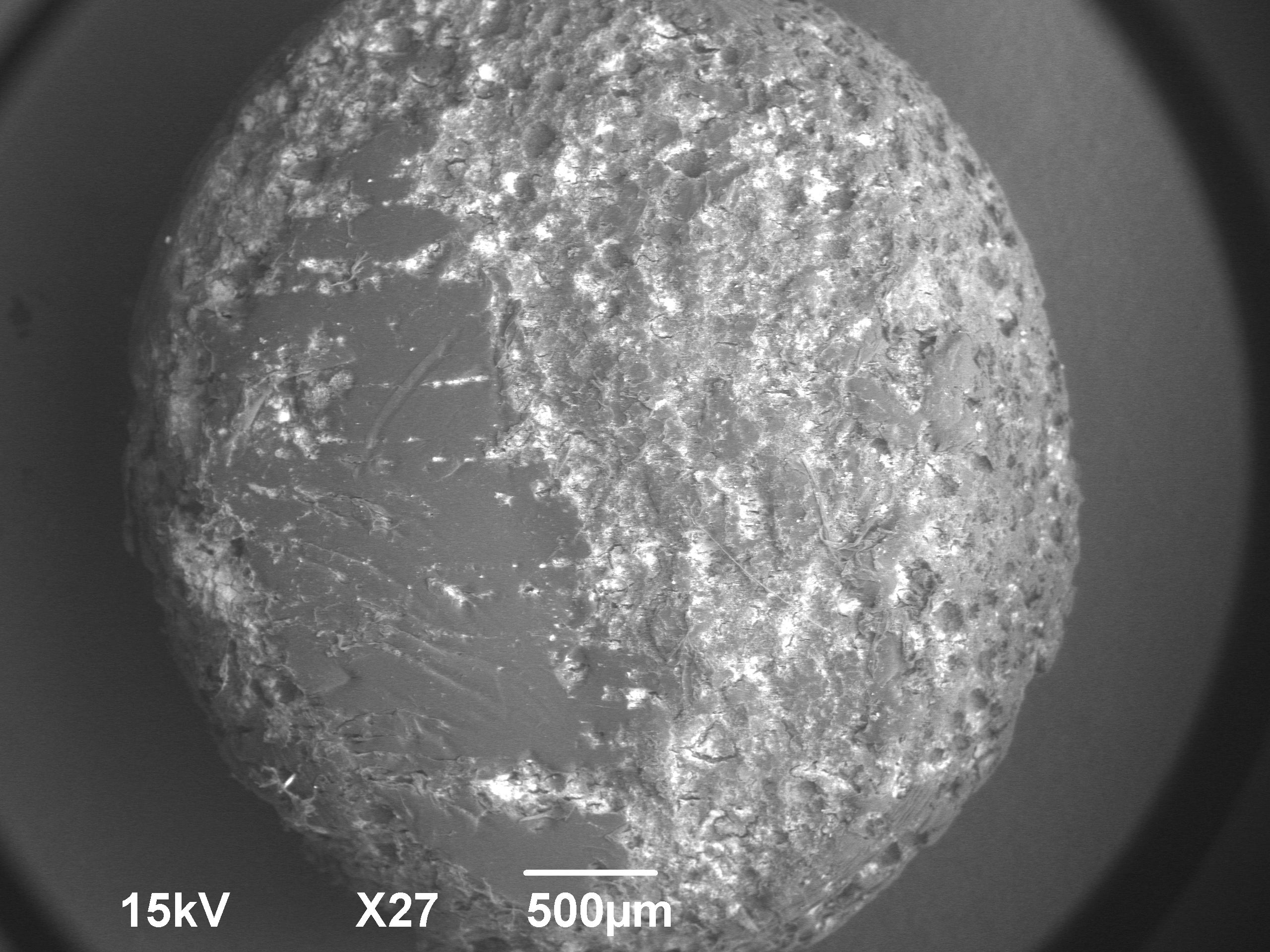New Study Pinpoints Texas as a Source of Nurdle Pollution to Mexico

Coauthor Dr. Xiangtao Jiang, holds a sample of nurdle from Padre Island, Texas in 2021. Credit: Jace Tunnell
A novel analysis combining chemistry and ocean modelling reveals that Texas likely is a source of nurdle pollution to Mexican coastlines. These tiny plastic pellets, comparable in size to a lentil, are the raw material used in manufacturing plastic products. Once released into the environment, they are extremely difficult to clean up due to their buoyancy and small size. Despite the challenge they pose, nurdles are surprisingly traceable. Most are white, contain few additives, and share a similar chemical structure. Their buoyancy allows scientists to model their movement using oceanographic particle tracking systems.
The study, led by Jordan Cisco, a graduate student at the University of Texas Marine Science Institute (UTMSI), was published this week in Environmental Research Letters. Cisco and coauthors analyzed over 700 samples to track the likely sources and pathways of nurdles from Texas to the Yucatán Peninsula. By examining color changes and chemical degradation, researchers developed weathering patterns and indices that indicate how long nurdles have been in the water. Those weathering patterns pointed to probable source locations and were input into a particle tracking oceanographic model to simulate probable routes for the nurdles after release. Results indicated that in the western Gulf of Mexico (America), Texas is likely a source of plastic pollution to Mexican coasts and not the other way around. The movement along the coast is relatively rapid, with several hundred miles in a time scale of several months.
The results were clear: Texas is a likely source of plastic pollution to Mexico — not the other way around.
“Identifying the source is the first step toward solving the problem,” says Cisco. “This kind of source-tracking can be applied globally to help pinpoint pollution origins and inform cleanup strategies.”
Jordan Cisco, graduate student and lead author
Plastic pollution is a global crisis, and nurdles are a major contributor. By understanding where they come from and how they travel, policymakers can better target prevention efforts. This research offers a promising path forward for mitigating plastic pollution through science-based solutions.

A close-up image of a nurdle reveals weathering through cracks and grooves caused by the photooxidation and attrition when the plastic debris was carried by the ocean current and stranded on the beaches. The image was taken with a Low-Vacuum Scanning Electron Microscope at The University of Texas at Austin’s Jackson School of Geosciences. Credit: Xiangtao Jiang, Omero Orlandini and Elizabeth Catlos.
The research used analytical techniques of color analysis, oxidative weathering to determine the length of exposure and time since release. While color analysis, changing from white to yellow and then brown, is a useful tool, it cannot statistically identify time in water or the degradation rate. The authors of the study analyzed mechanical abrasion and ultraviolet oxidation to determine how the molecular structure changes. They found that changes to the carbon and oxygen bonds in the molecular structure was the best indicator of weathering. To understand the route of released nurdles, a Lagrangian particle tracking model was coupled with a regional hydrodynamic model that used currents and other variables such as water level, and wind speeds. The ocean model simulated pollution sources from Galveston, Texas, and Veracruz, Mexico, under different seasonal and storm conditions. It showed fresher nurdles in Texas and more weathered ones in Mexico, confirming a southward movement of pollution. These findings were validated using buoy data.
Texas and petrochemical plants have additional information and insight into where these spills are moving to. The types of analysis and new chemical techniques also provide a more accurate measurements of weathering changes as they relate to exposure time to make the pollution source estimates more precise.
Cisco collaborated with coauthors Xiangtao Jiang, Jianhong Xue, and Zhanfei Liu from UTMSI; Jace Tunnell from Texas A&M University–Corpus Christi; and Junwei Hua and Jiabi Du from Texas A&M University. The research was supported by the Nurdle Patrol citizen science project, NOAA Marine Debris Program, UTMSI, Matagorda Bay Mitigation Trust, and the Coastal Bend Bays and Estuaries Program.



